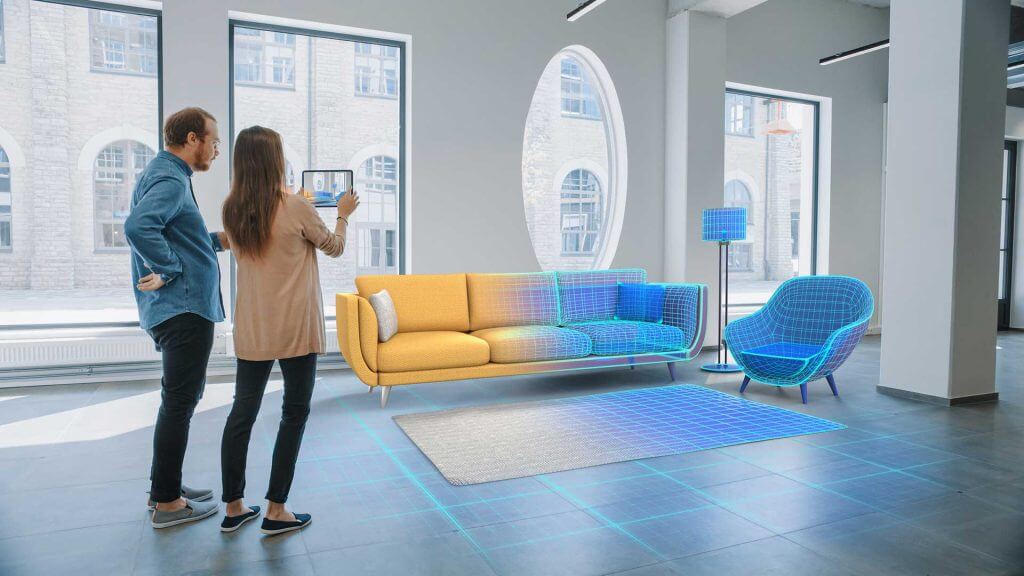Blog
A comprehensive guide to getting started with the world of immersive technology
Imagine sitting comfortably on your bean bag and being able to experience the excitement and thrill of riding a huge roller coaster ride in Disneyland! One can ask if that’s even possible, especially the faint-hearted ones who would be terrified of even watching people enjoying such rides..
But, with emerging technologies like Virtual Reality(VR), it is possible to be in your favorite utopia. It is likely to create reality just like one’s dreams- something that seems to be real and unreal at the same time. That being said, let us understand the nuances and concepts behind VR in a detailed manner.

What is virtual reality?
In simple words, Virtual Reality is a simulated impression of reality that has the potential to create a tangible experience for users. The sole aim of VR is to generate a virtual existence of senses such as sight, touch, smell, hearing, and even taste. What’s so special about VR is that it is not like the basic 2-dimensional user interfaces. VR allows users to experience and partially immerses them in a different 3-dimensional world. They can interact with this imaginary world and feel as if they are physically present in that space. VR makes an environment very believable and engages both the mind and body of users. Whether it is walking on a green grass in a park or rock climbing, VR lets users enjoy two-way interactions— it responds to what you do. For instance, if you bow down your head to see your feet on the green grass, VR changes the view to match the new perspective.
What do numbers have to say about VR?
To have a clearer picture, let’s take a look at some stats. According to Statista, the VR industry is growing at an exponential rate. The market size for VR hardware and software is estimated to reach a stunning $16 billion by the year 2022. Popular VR headset supplier companies such as Oculus, HTC, and PlayStation anticipate the number of VR device shipments to reach $12.5 million in the next two years. While the gaming and video industries are the largest consumer use cases for Virtual Reality, the benefits of VR will also have a strong impact on other industries such as healthcare, real estate, engineering, etc. By the year 2023, it will be more probable to find the use of VR in many industries. Though consumers might face trouble in adopting the new technology, there is no doubt that extended reality (XR) including VR will revolutionize the way people have been familiarizing with businesses. So, are there any types of VR? If yes, what are the various types of virtual reality? Let’s explore.
Are there any types of virtual reality?
Some factors are essential to consider building an alternative world successfully with the help of VR. One of the most important determinants is that the illusion which VR creates must be believable and realistic. Also, the VR must seamlessly interact with you and move with you whenever you change your position. Besides, VR must use powerful computers capable of producing 3D graphics for generating real-time worlds. Not to mention that a VR world should also be explorable and be capable of immersing users into a new experience for hours. Depending on these factors, the most prominent types of VR have been classified as follows:
- Fully Immersive Virtual Reality
- Non-Immersive Virtual Reality
- Semi-immersive Virtual Reality
- Augmented Reality
Now, let us understand each of these in detail.
Fully Immersive Virtual Reality
Most of the time when users think about VR, it is mostly the fully-immersive type of virtual reality. Such type of VR experience generally requires powerful computers with head-mounted displays, sensory gloves, and other body connectors having motion detectors. Fully-immersive VR creates a richly detailed virtual world for users through such devices and thus, it is an expensive form of VR. However, it ensures that users have a truly realistic experience. The unique aspect of this kind of VR is that it adjusts the environment in real-time according to one’s movements, thereby, creating an illusion of being present in an alternate dimension. One great use-case of this type of VR is in virtual medical training. New surgeons can use fully-immersive VR to train themselves for complicated and risky heart or brain surgeries without the need to operate on an actual patient.
Non-Immersive Virtual Reality
If one has played any video game like the Wii Sports that seems very interactive on mobile phones or personal computers, they have experienced non-immersive VR. The system detects motion through computer and joystick to translate it on the computer’s screen. Though non-immersive VR simulations don’t let users get immersed into the reality produced by the device, it gives a richer experience on a widescreen. Since this type of VR can easily use a home PC with headphones and a joystick, it is affordable and beneficial for architects and the real estate industry. Architects can create 3D building models to show to their clients instead of 2D drawings or animated clips. This can give clients a complete understanding of the building, allowing them to move around and explore seamlessly.
Semi-Immersive Virtual Reality
Semi-immersive virtual reality is a combination of fully-immersive VR and non-immersive VR. Simulations can be in the form of a virtual space where you can partially interact with your environment. Moreover, it gives a perception of being in a different world as digital objects such as computer screens and controllers are used to interact with physical objects present in the virtual world.
However, certain limitations are there which include restricted physical movements and partial immersion. Gyroscopes and VR boxes are also used to create the required realistic experience for users.
One of the most popular semi-immersive VR applications is in virtual tours used by businesses nowadays. Owing to its cost-effectiveness and the choice to operate on device or web, the real-estate industry and education sector can work on harnessing the potential of semi-immersive VR.
Augmented Reality
Augmented reality is connecting the real world with the virtual world through the information available on the web. In simple words, it promotes exploring, navigating, and personalizing the virtual space that has been created with the help of VR. For instance, you want to buy a flat and wish to do the interior design of the flat on your own. Adding virtual entities like furniture, potted plants and other elements to your space will give you a clear picture of how your flat might look like. With the help of a device, Augmented Reality lets one play around and experiment with their virtual space. In a nutshell, it is one of the most unique types of technologies that can enhance the use of virtual reality by manifolds.
Ready to travel back to the real world?
With the entire world facing the brunt of the COVID-19 pandemic, virtual reality has the full potential to be the new normal in the coming years. It can open endless possibilities for businesses from any sector. Day by day, people are opting for new ways to stay inside their homes by continuing with their daily routines and working from home to keep their businesses running. Many brands are moving towards adopting new technologies like Virtual Reality to survive this difficult phase. So, how prepared are you to experiment with VR for improving your real-estate business? Get in touch with RealityBIT to escape into the new virtual world!
